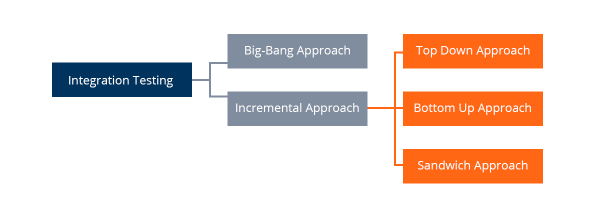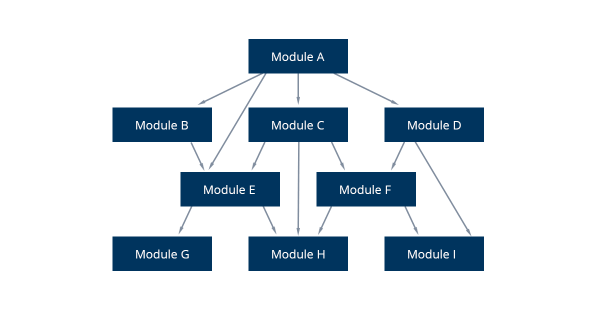
Testing software product presupposes the implementation of different testing methods and techniques. Integration testing is a technique in which program modules are combined and tested as a single unit. This type of testing is quite bulky and contains several approaches:

Big Bang Integration Testing is an approach in which all software components (modules) are combined at once and make a complicated system. This unity of different modules is then tested as an entity. According to this checking method, the integration process will not be executed until all components are completed.
Such an approach helps to save the tester’s time and effort while executing the tests. To meet the desired goals and results, QA engineers have to record properly test cases and their outcomes. Otherwise, the whole integration testing process will be failed. Below is the example of the Big Bang testing workflow:

Big Bang Testing Advantages
- the whole system is tested
- requires minor planning
- consists of completed and checked modules
- there is no demand for urgent build fixings
- suitable for small systems
Big Bang Testing Drawbacks
- it is hard to separate modules when the bug is detected
- ineffective for large systems
- high risk to miss some crucial issues while testing the whole system
- failures occur more frequently because of the simultaneous check of numerous modules
- a single mistake can influence the results of the whole integration testing
Conclusion
The Big Bang approach is a method of integration testing that presupposes simultaneous checking of all system components. Its main benefit is that a tester can inspect the work of the whole system and its components.
However, if there are too many modules and the system is multilevel and complex, it is better not to apply the big-bang integration testing. In such cases, the checking process will be ineffective. The software specialists should analyze all system peculiarities, task completion dates, and plan the testing process with appropriate techniques and methodologies.
